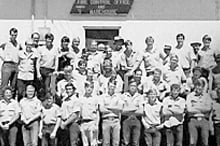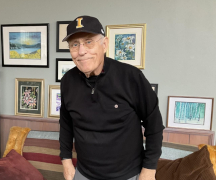No products in the cart.
Fire on the Range

Eighteen Years on the Line
By John Beckwith
An eerie voice came out of the night, over the radio from “The Butte,” or Squaw Butte north of Emmett, now officially named Sehewoki’l Newenee’an Katete. “This is Friday. I believe I see fire just south of Kuna. I’ll check with Danskin Lookout and see if they can locate it.”
It often was said that Orville “Friday” Blessinger could spot a fire before it started. He and his wife Helen spent many summers at this lookout, among a total of thirty-eight years with the Bureau of Land Management (BLM) on the Boise National Forest. They knew the geography of southwestern Idaho, and the sincerity with which they did their work made you feel their kinship with the land.
Friday’s prediction of weather patterns and speculation on conditions often was better than that of the weather experts. For example, more than once he told us over the air to expect lightning because “we have flying red ants.” I was told that these ants take wing when the humidity reaches a certain level.
From my senior year of high school in 1957 through 1975, I worked for the BLM, mostly part-time, fighting fires throughout southwestern Idaho. Usually it was weekend work, although the summer of 1970 was full-time. My parents and I were avid rock hounds, which gave me a knowledge of much of Owyhee County and its surrounds.
This content is available for purchase. Please select from available options.
Register & Purchase Purchase Only
Register & Purchase Purchase Only

